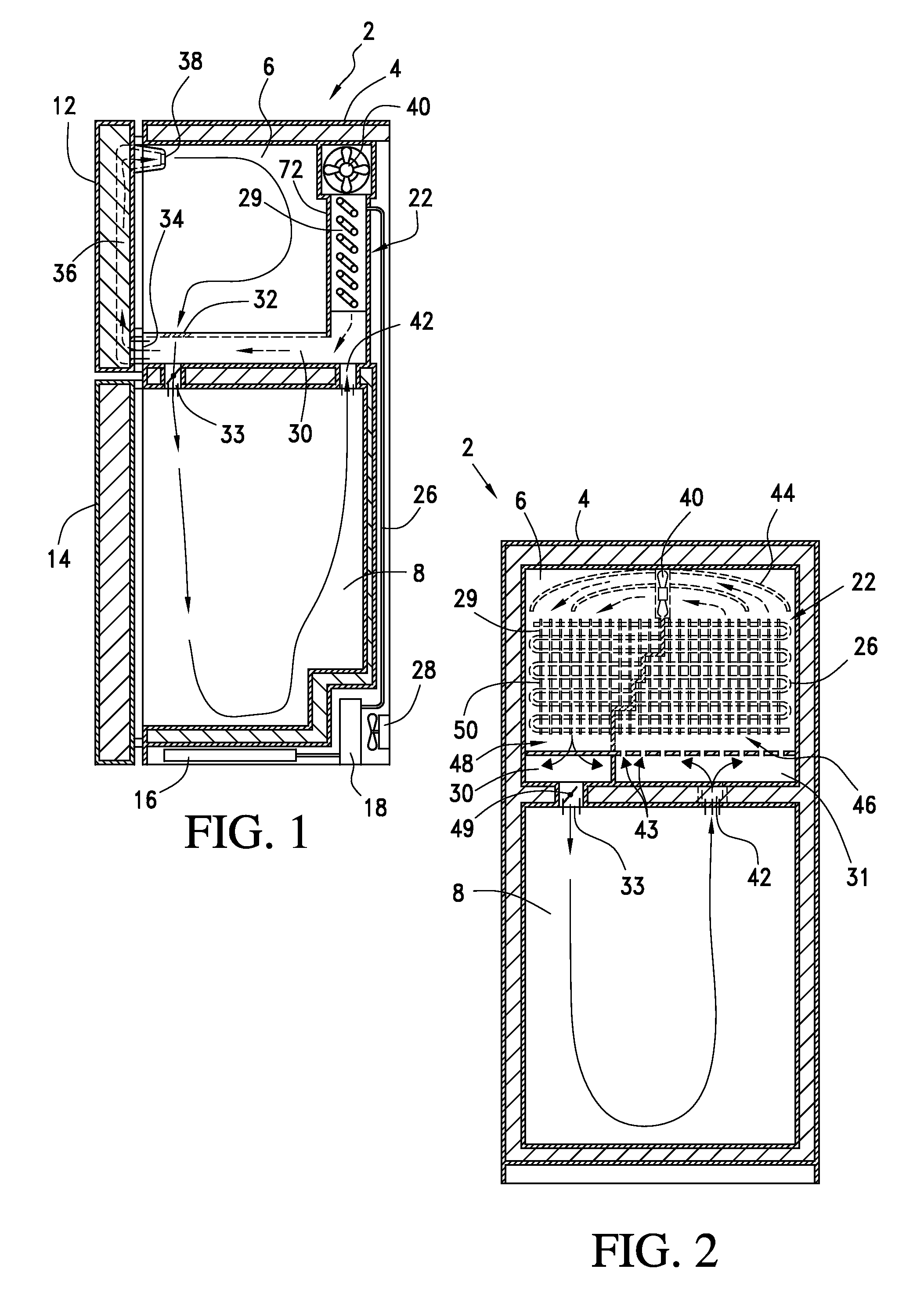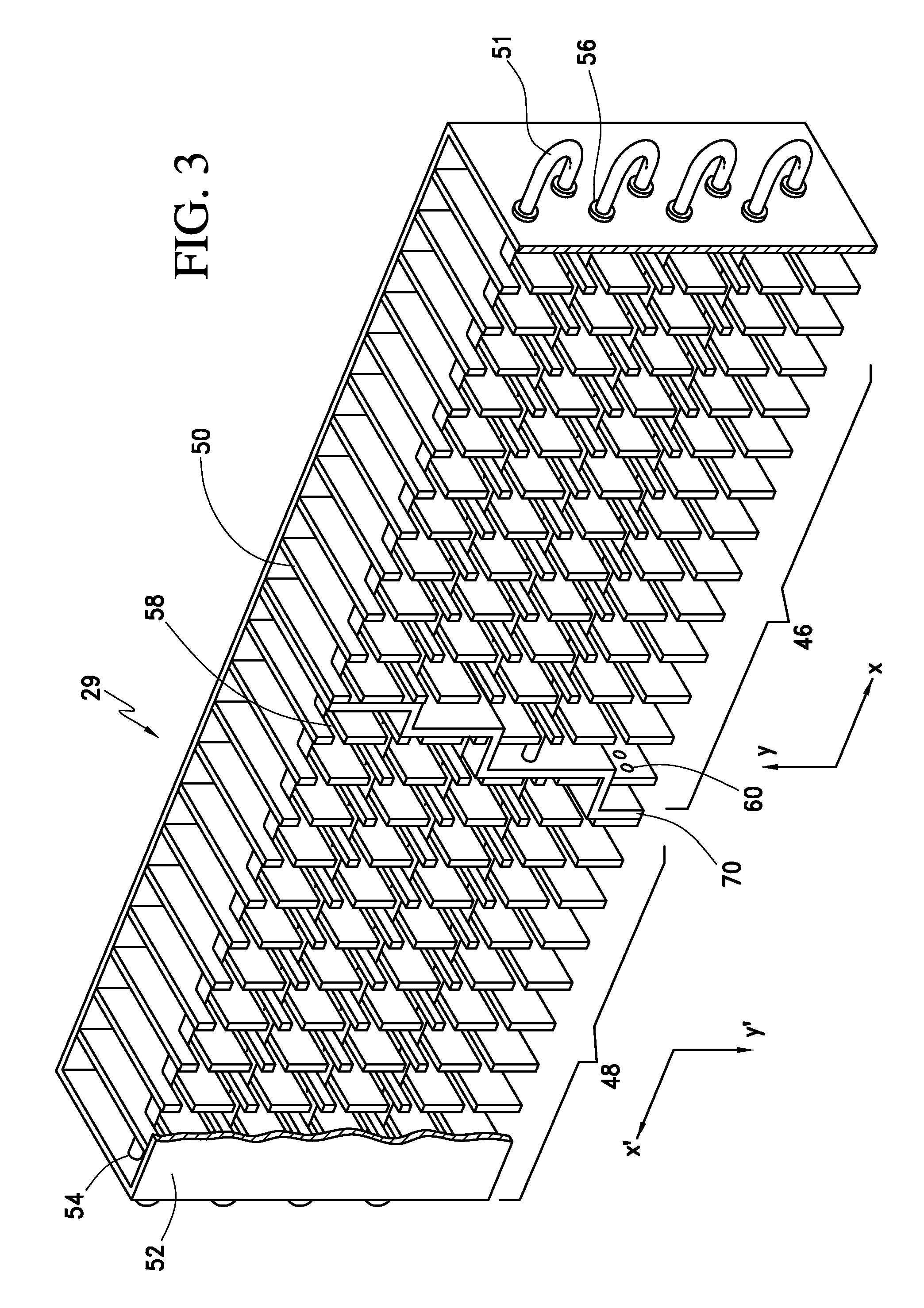Refrigerator accelerated heat exchanger
a heat exchanger and refrigerator technology, applied in the field of refrigerators, can solve the problems of increasing the energy consumption of the appliance, and clogging and closing the flow passages of cooling air, so as to accelerate the movement of air through the air flow passages and reduce the cross-sectional diameter.
- Summary
- Abstract
- Description
- Claims
- Application Information
AI Technical Summary
Benefits of technology
Problems solved by technology
Method used
Image
Examples
Embodiment Construction
[0028]With initial reference to FIG. 1, a refrigerator 2 includes a cabinet 4 housing two food storage cavities, a first upper cavity 6 and a second lower cavity 8, for storing food or other articles to be cooled or frozen. Cavities 6 and 8 are closed by doors 12 and 14, respectively. In a preferred embodiment, upper cavity 6 constitutes a freezer compartment and lower cavity 8 defines a fresh food compartment. Refrigerator 2 includes an air flow circuit having a condenser assembly 16, a compressor 18, an evaporator assembly 22 and a sealed refrigerant system including tube 26 for connecting these elements. In a manner known in the art, tube 26 contains a refrigerant fluid. Additionally, the air flow circuit preferably includes a condenser fan 28. In accordance with the invention, evaporator assembly 22 includes a tube and fin-type accelerated heat exchanger 29 which will be detailed more fully below.
[0029]In a first arrangement shown in FIGS. 1 and 2, cooled air circulates from eva...
PUM
 Login to View More
Login to View More Abstract
Description
Claims
Application Information
 Login to View More
Login to View More - R&D
- Intellectual Property
- Life Sciences
- Materials
- Tech Scout
- Unparalleled Data Quality
- Higher Quality Content
- 60% Fewer Hallucinations
Browse by: Latest US Patents, China's latest patents, Technical Efficacy Thesaurus, Application Domain, Technology Topic, Popular Technical Reports.
© 2025 PatSnap. All rights reserved.Legal|Privacy policy|Modern Slavery Act Transparency Statement|Sitemap|About US| Contact US: help@patsnap.com



